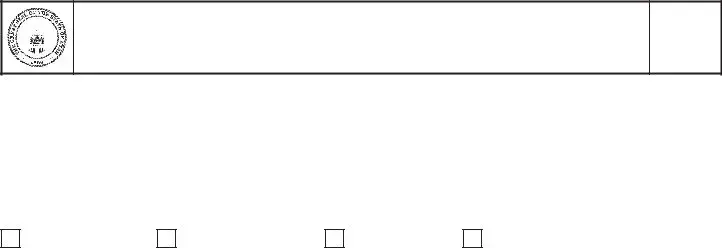Similar to Utah's TC-142 form, the California REG 352, Request for Personalized License Plates, allows individuals and businesses to apply for custom plates. Both applications require the applicant's information, the desired plate text, and specify fees for the acquisition and renewal of these plates. They share a procedural foundation: gathering detailed information to ensure the appropriateness of the text for public display and confirming the applicant’s eligibility based on their status as a personal or commercial entity.
The New York MV-82, Vehicle Registration/Title Application, also aligns closely with Utah’s TC-142 form. Like the TC-142, it is used for various transactions including the registration of special plates. Both forms require detailed information about the vehicle and applicant, and delineate specific fees associated with their requests. Each form also implements measures for verifying insurance coverage, underscoring the importance of regulatory compliance in vehicle registration and plate issuance.
The Texas VTR-999, Application for Custom Plates, serves a similar purpose to the TC-142 by offering specialty plates to qualifying individuals and businesses. Both necessitate specifics about the applicant and the type of plates requested, including fees for production and maintenance. They ensure the individual or business applying is in good standing and meets the criteria for receiving such plates, maintaining a balance between personalization and legal compliance.
Florida’s HSMV 83034, Application for Specialty License Plate, resembles the TC-142 form in its process for applying for distinctive plates. Each application demands complete information regarding the vehicle and registrant, alongside specified fees. Both forms contribute to state efforts to personalize the driving experience while ensuring the applicants adhere to state vehicle regulations and standards.
The Illinois Application for Vehicle Transaction(s) (VSD 190), parallels the TC-142's purpose by allowing for several vehicle-related transactions, including special plate issuance. Each form details the need for thorough information about the vehicle, applicant, and the transaction type, clarifying the financial obligations associated with these requests. This similarity points to a broader trend of utilizing comprehensive applications to streamline vehicle transactions while maintaining high standards for information accuracy and completeness.
Michigan's SOS-429, Application for Special Registration Plate, mirrors the functionality of the TC-142 by providing options for various groups, including commercial entities, to obtain unique plates. Both forms emphasize the required information about the entity, vehicle, and plates sought, including associated fees. This approach aids in ensuring that those awarded special plates are both eligible and compliant with state laws concerning vehicle registration and operation.
The Oregon 735-6726, Application for Veteran Plates, although focused on a specific category of specialty plates, shares common ground with Utah's TC-142 form in terms of structure and requirements. Applicants must provide personal information, vehicle details, and adhere to specific criteria to qualify, alongside fee submissions. This demonstrates a unified approach across states to manage specialty plate applications through detailed forms that ensure eligibility and compliance.
Lastly, Colorado's DR 2817, Application for Disability Parking Placard, while centered on a different type of vehicular designation, converges with the TC-142 in terms of procedural essence. Applicants must supply detailed personal and vehicle information and submit appropriate documentation to verify their eligibility. Though focused on disability placards, the process aligns with the goal shared across these forms: to facilitate specific needs while enforcing regulations and standards within the motor vehicle community.
